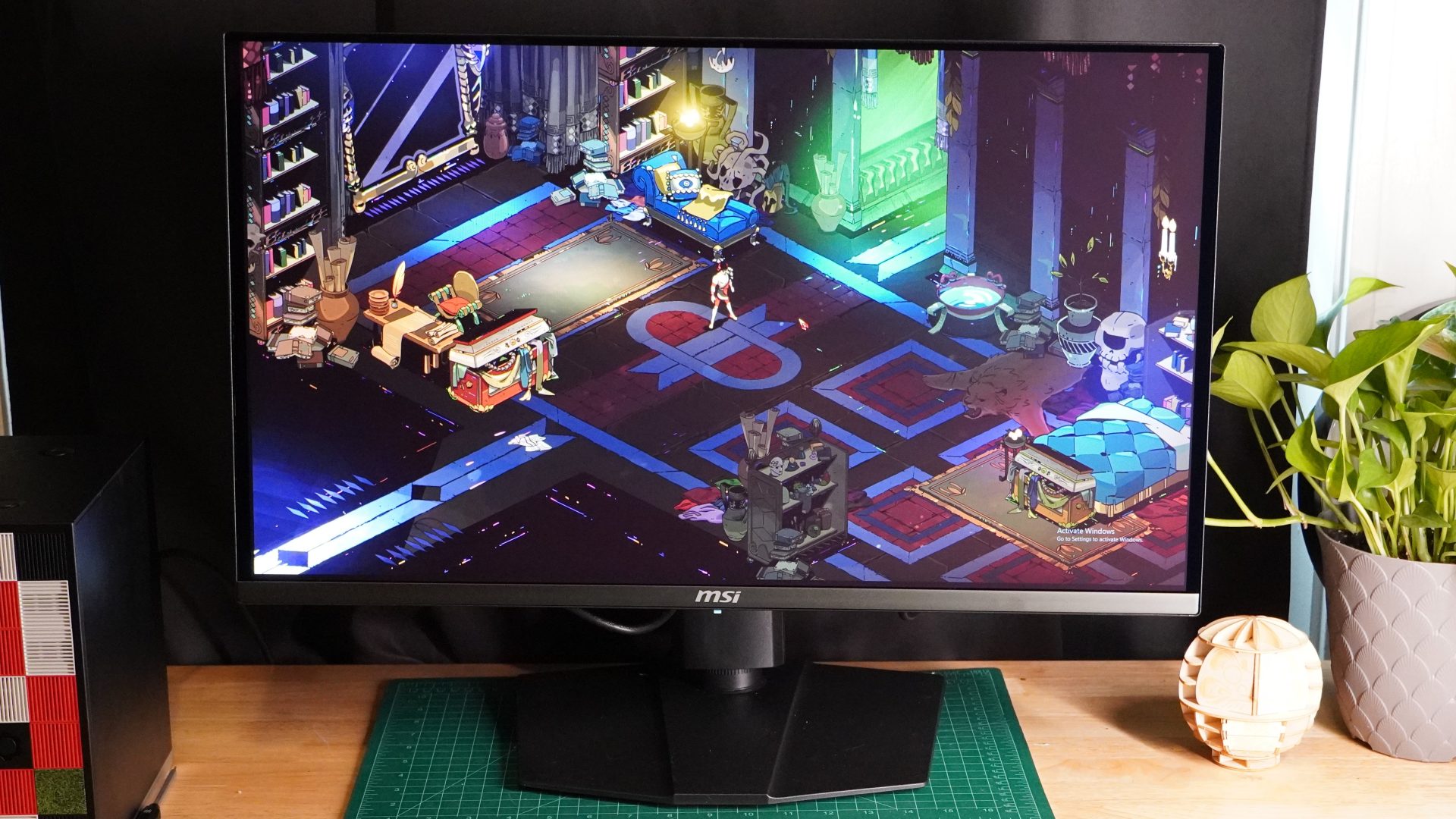MSI MAG 272QP QD-OLED X50 Review


The MSI MAG 272QP QD-OLED X50 is continuing the brand’s foray into ever more impressive QD-OLED gaming displays offering high-end performance at surprisingly reasonable prices. This new monitor pushes the boundaries of speed with a 500Hz refresh rate while providing a colorful and clear display. It may skimp on some of the extras that you’d expect from a high-end gaming monitor, but there’s a lot of promise in the panel alone, and the $750 price tag is still a surprise.
MSI MAG 272QP QD-OLED X50 – Design and Features
If you’ve seen any of MSI’s recent QD-OLED monitors, you won’t find much new design-wise here. That’s not to say the monitor is dull or dated, just that MSI didn’t seem to invent much in renewing the packaging. Like its predecessors (the 360Hz MSI MAG 271QPX, for instance) the MSI MAG 272QP QD-OLED X50 offers a thin QD-OLED panel that extends from a smaller rear backing that houses the rest of the electronics, connects to the stand, and offers ports out the bottom. MSI has integrated the power supply into the rear, too, so you won’t have to deal with an external power brick on your desk.
That rear housing also has plenty of vents to help dissipate heat, but it doesn’t use fans so it remains quiet. Just make sure you peel off all the packaging film, as MSI ships the monitor with plenty of plastic covering the vents. MSI used a graphene film and heatsink to get heat away from the display, and there’s a good reason for it, so all the best to make sure you let the cooling take place. In addition to the cooling, the monitor has several automatic functions (all of which are enabled by default) built in to help maintain the longevity of the pixels. These include both pixel shifting and a full panel refresh that it generally will perform when the monitor goes into standby, so you’re never interrupted by it.
The front of the monitor is fairly bare with just the silver chin bezel below the display, a small MSI logo, and a little indicator light to let you know whether the monitor is on, asleep, or off. Tucked behind that light are some controls, including a convenient joystick that makes navigating the settings menus quite simple.
Around back, the MAG 272QP QD-OLED X50 includes two HDMI 2.1 ports and one DisplayPort 1.4 port, all of which support the monitor’s full 1440p/500Hz specification. That’s a good arrangement for multiple consoles, PC, or even a media device to connect to the monitor. There’s also a USB-C port available that provides an extra connection option, which could be useful for laptops and mobile devices. It also can provide power to those devices, though at just 15W, it won’t power many laptops. There’s no USB hub capabilities from the monitor either, nor are there speakers, but that $750 price tag had to make sense somehow. Another omission to keep the price down: no RGB lighting.
The MAG 272QP QD-OLED X50 is built on a modest stand. It has a mostly flat, shield-shaped base that doesn’t take up a ton of space like those with super-long legs. It provides 110mm of vertical adjustment, which is fairly typical. It also allows horizontal swivel, vertical tilt, and rotation into a vertical orientation – you know, for when you eventually relegate this to secondary-monitor status in a few years when you’re running a 4K/1000Hz monitor as your primary.
MSI MAG 272QP QD-OLED X50 – Gaming and Performance
The MSI MAG 272QP QD-OLED X50 is hands-down one of the best feeling monitors I’ve tested. That’s not to say it’s not without its drawbacks, but in the right conditions, it is truly exceptional. My fellow reviewers and I have used the words buttery smooth to describe refresh rates even as modest as 120Hz. When comparing those displays to this 500Hz OLED panel and its ultra-fast pixel response times, this display is more like hot butter sliding through the frictionless vacuum of space. In practice, that means Blur Busters’ UFO Ghosting Test shows pristine little UFOS even as they zip across the screen.
Everything looks so smooth on the MAG 272QP QD-OLED X50. Sending the monitor a consistent 600fps in Hades, I watched all the action unfold in glorious detail. And running around in Call of Duty Warzone, the fluid visuals helped me quickly aim at and track targets even when I wasn’t scratching 500fps. Since the monitor supports VRR from 48Hz to 500Hz, as long as you’re in that range you should get clean frames for as smooth of gameplay as your system can manage. And if you’re going over, as I did in Hades, the length of time a screen tear will appear, if one does, may be all but imperceptible.
That brilliant speed is matched by a quality display in most other respects. The 1440p panel is reasonably sharp at 27 inches, and MSI is using a newer panel that avoids some of the unfortunate sub-pixel arrangements of earlier OLED monitors. Fine text is clear on this one without noticeable color fringing.
The MSI MAG 272QP QD-OLED X50 naturally carries the best aspects of QD-OLED displays: It offers rich color and infinite contrast. My colorimeter measured the display achieving 100% coverage of the sRGB, 96% of the AdobeRGB, and 98% of the DCI-P3 color spaces. And it could achieve that with an average dE of 1.06 and a max dE of 1.75, making it sufficiently accurate for professional color work.
Brightness has generally been the weaker point of OLED displays. The MAG 272QP QD-OLED X50 may not be a match for bright IPS and Mini-LED displays, which can achieve very bright levels for a full screen of white pixels. But the monitor still impresses. By default, it only hits 222.9 nits for a full white screen, but by dialing the brightness up to 100%, it bumps up to 297.8 nits. That’s bright enough for a typical office or bedroom, but it may not do in a very bright room with many windows. The display has an anti-glare finish that helps reduce the brightness of reflections quite well, though very bright reflections will still show.
While fullscreen brightness isn’t the strongest, the MAG 272QP QD-OLED X50 has much more impressive HDR highlights. Using any of its HDR picture modes, the display hit around 530 nits at 10% APL (a window that’s mostly black with a white box occupying 10% of the space). With the brightest EOTF Boost setting, it even jumped up to 965 nits for a 1% APL. And those brightness levels are happening alongside perfect black pixels – something IPS and Mini-LED panels can’t pull off. The Asus ROG Swift OLED PG27AQDP still has it beat with a slightly higher 1,136 nits in our testing, but MSI’s monitor is slightly faster and cheaper.






